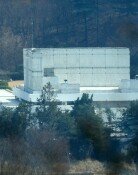School Stats Show Birth Rate Decline
The number of elementary school students this year marked the lowest in the history of the education statistics survey since 1962 at 3.925043 million. This is only 68 percent of the highest level recorded in 1970 when there were 5.749301 million elementary school kids.
With increasing number of couples deciding to delay or forgo having children, Koreas population is increasing at a much slower rate, signaling a further fall in the number of elementary school students.
According to the 2006 Education Statistics Report released yesterday by the Ministry of Education and Human Resources Development and Korean Educational Development Institute, as of April 1 2006, there were 97,758 fewer elementary school students than in last year. The number has been continuously declining since 1971.
The Education Ministry expects the figure to fall to 3.325 million by 2010.
Meanwhile, the number of kindergarten kids rose by 4,209 to 545,812, middle school students by 64,607 to 2.075311 million, and high school students by 12,961 to 1.775857 million from last year. The total number of pre-high school students stood at 8.322023 million, 15,981 fewer than last year.
On the contrary, the number of teachers has been rising to reach 420,593 this year, a 15.2 percent increase from 2000. The number of students per teacher was 24 in elementary schools, 19.4 in middle schools and 15.1 in high schools, still short of reaching the OECD average of 16.5 in elementary schools and 13.6 in middle schools.
The average age of teachers was 39.8 in elementary schools, 40.1 in middle schools, 40.8 in high schools and 42.4 in vocational high schools. Overall, teachers are one to two years older than in 2000, and they are expected to get older due to falling turnover.
Looking at the gender ratio among teachers, the number of female teachers kept on rising to account for 62.3 percent. The proportion was even over 80 percent in 23.8 percent of elementary schools and 10.1 percent of middle schools. In case of Gokran Elementary School in Gunpo, Gyeonggi Province and Samyuk Elementary School in Donghae, Gangwon Province, there were 100 percent female teachers.
On the same day, the National Statistical Office released 2005 Birth and Death Statistics, which estimated the natural population increase, birth minus death, to be 192,600. This was the first time the figure fell below 200,000. Such a decline in population can be attributed to Koreas birth rate of 1.08, which is among the lowest in the world.
Just ten years ago, in 1995, Koreas population grew naturally by 472,700, which is about the number of people living in Yangcheon-gu, Seoul, but it increased only by 193,300 last year, which is equivalent to the population of Geoje, Gyeongnam Province.
Moreover, couples are having babies later. Due to late marriages and late child-bearing, the birth rate among women in their 20s fell to the lowest in history at 92.3 babies per 1,000 women. The number of childbearing women in their 30s was higher than those in their 20s for the first time, taking up 40.9 percent while the latter accounted for 40.2 percent.
foryou@donga.com
Headline News
- Yoon removed from office by unanimous court decision
- Constitutional Court mentions responsibility of both Yoon and National Assembly
- Won-dollar rate falls to 1,430 range after impeachment ruling
- Teacher with spinal cord injury transforms into career counselor
- U.S. redeploys Patriot missiles from S. Korea without replacement forces







